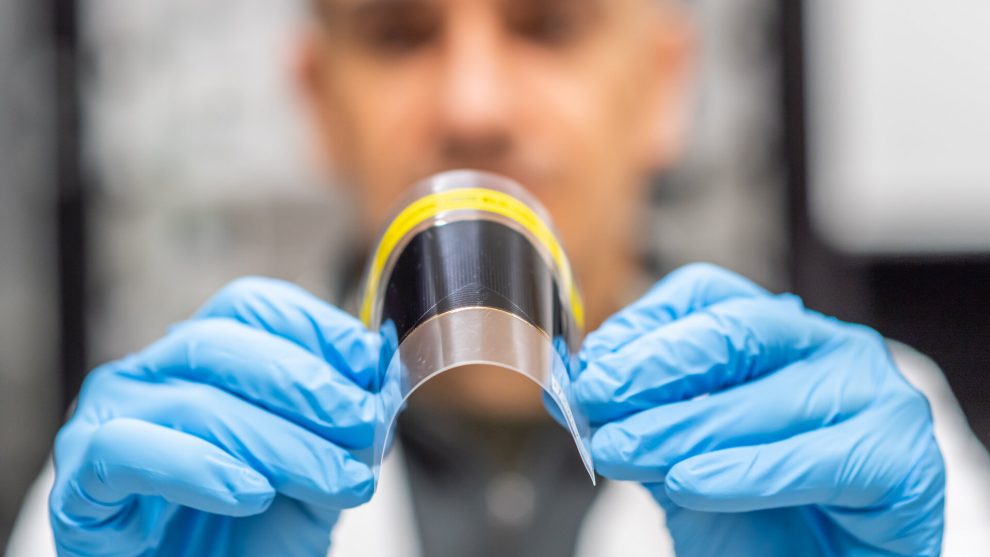The new ultra-thin solar cells are just around 0.02 mm thick, thinner than a strand of human hair
The ESA (European Space Agency) has supported the invention of ultra-thin, flexible solar cells. These cells will produce the most efficient power to mass ratio for space missions. The power to weight ratio indicates the performance of the engine or vehicle.
The new ultra-thin solar cells are just around 0.02 mm (millimeter) thick. This is thinner than a strand of human hair. The solar cells are a prototype that were developed by Azur Space Solar Power in Germany and tf2 in the Netherlands. The project was supported by ESA’s Technology Development Element that investigates new technologies for space applications.
The newly discovered bendy, ultra-thin solar cells were created using a methodology called ‘epitaxial lift-off’ (ELO). Epitaxial lift-off allows the integration of III-V films and devices onto random material substrates. Through the epitaxial-lift off process of production, the solar cells were peeled off the Germanium substrate layer that they were initially laid upon. As a result, the costly material can now be reused.
During this project, both triple and quadruple junction solar cells were manufactured. Multi-layered solar cells are created out of three or four layers of cell material in order to utilize different wavelengths of light comprised within the solar energy spectrum.
These thin paper solar cells can be harnessed for ESA satellites in future. They can also be used for high-altitude pseudo satellites (HAPS) – unscrwed aircraft or balloons to perform satellite like tasks from upper atmosphere.
The ESA is Europe’s entry point into the space mission with a primary purpose to serve Europe’s space capability and ensure that investment in space continues to be beneficial to the world.
Recently, scientists from RIKEN Cluster for Pioneering Research and RIKEN Center for Emergent Matter Science have also succeeded in creating ultrathin ‘organic’ solar cells that are both extremely efficient and durable. This cutting-edge invention was made in collaboration with international partners. The cells were created using a simple post-annealing process. These organic ultra-thin solar cells apparently degrade by less than 5% over 3,000 hours in atmospheric conditions. The cells have an energy conversion rati o of 13% or more. The solar cells energy conversion ratio is the measure of solar efficiency, which is the portion of energy in the form of sunlight that can be converted through photovoltaics into electricity by the solar cell. The efficiency of solar cells used in a solar photovoltaic system, in combination with latitude and climate, determines the annual energy output of the system.
Organic photovoltaic solar cells are increasingly finding applications as an alternative to silicon-based conventional films, being more environmentally friendly and cheap to produce. Ultrathin flexible solar cells are even more useful since they produce more power per unit of weight and can be used in a wider variety of applications like wearable electronics; and sensor and actuators in soft robotics. Ultrathin organic films tend to be relatively efficient and have an energy conversion ratio of around 10% to 12%. This is lower than the ratio of silicon cells, which can be as high as almost 25%.














Add Comment